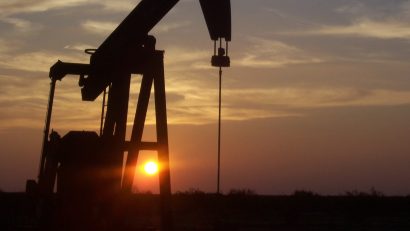Canada’s oil and gas industry is a fascinating mix of challenges, opportunities, and complexities, intricately woven into the fabric of the nation’s economy. From the vast oil sands of Alberta to offshore drilling operations off the east and west coasts, this industry plays a significant role in Canada’s energy sector. In this article, we will delve into the various aspects of the oil and gas industry in Canada, explore its significance, and shed light on the challenges it faces along with opportunities it presents.
Canada’s Rich Energy Resources
Canada is home to abundant energy resources, making it one of the world’s leading producers and exporters of oil and gas. The country’s vast reserves primarily come from the Alberta oil sands, which hold an estimated 165 billion barrels of recoverable oil. Additionally, Canada possesses substantial conventional oil and natural gas reserves, both onshore and offshore.
Economic Significance
The oil and gas industry serves as a vital pillar of the Canadian economy. It generates substantial employment opportunities, sustains government revenue through taxes and royalties, and contributes to the nation’s export earnings. According to the Canadian Association of Petroleum Producers (CAPP), the industry employs over 500,000 Canadians and accounted for 11% of the country’s total nominal GDP in 2019. Additionally, the oil and gas sector contributed an impressive $108 billion to the Canadian government’s revenue over the past decade.
Environmental Concerns
While the oil and gas industry brings economic benefits, it also faces significant environmental challenges. The extraction and production processes can have detrimental effects on local ecosystems, water resources, and air quality. Moreover, the carbon emissions associated with burning fossil fuels contribute to climate change, a global concern. Canada is actively working on reducing its carbon footprint and transitioning towards cleaner energy sources.
Technological Innovations
The oil and gas industry in Canada has embraced technological innovations to tackle environmental concerns and enhance efficiency. Advanced extraction methods, such as steam-assisted gravity drainage (SAGD), are being employed to minimize the impact on the environment. Additionally, companies are investing in research and development to make significant advancements in carbon capture and storage (CCS) technologies, aiming to reduce greenhouse gas emissions.
Regulatory Framework
Canada has a robust regulatory framework governing the oil and gas industry, aimed at ensuring safety, environmental protection, and responsible resource development. The industry must comply with stringent regulations set by federal, provincial, and territorial authorities. This framework encompasses areas like exploration, production, transportation, and spill response, providing a comprehensive structure to uphold industry standards.
Indigenous Engagement
Another critical aspect of Canada’s oil and gas industry is engaging with Indigenous communities. Many energy projects are located on traditional Indigenous lands, necessitating meaningful consultation and participation. The industry seeks to create partnerships that respect Indigenous rights, benefit local communities, and foster economic development.
Global Market Dynamics
Canada’s oil and gas industry operates in a dynamic global market. Fluctuations in oil prices, geopolitical tensions, and changing demand patterns across the globe can significantly impact the industry’s profitability. Nevertheless, Canada’s resource abundance, including its proximity to the United States, positions it as a reliable supplier to meet global energy demands.
Diverse Stakeholders
The oil and gas industry in Canada involves a diverse range of stakeholders, including governments, industry associations, local communities, environmental organizations, and Indigenous groups. Balancing their varied interests poses a considerable challenge. Meaningful dialogue and collaboration among these stakeholders are essential to strike a balance between economic development, environmental stewardship, and social responsibility.
Conclusion
Canada’s oil and gas industry is an intricate tapestry of opportunities, challenges, and complexities. With its vast energy resources, economic significance, commitment to technological innovation, and robust regulatory framework, the industry is poised for ongoing growth. However, it must navigate through environmental concerns, engage with Indigenous communities, adapt to global market dynamics, and foster collaboration among diverse stakeholders. By addressing these challenges head-on, the industry can continue to propel Canada’s economy forward while striving for sustainable and responsible resource development.



